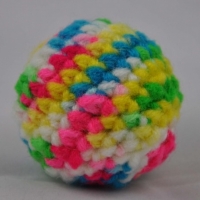
When it comes to training your puppy, there are a few tips to keep in mind to help guide you through the process. By following a few key points, you can maintain consistent training and avoid letting things get ruff.
If you are using the crate method for housebreaking your puppy, never leave him/her inside of the crate for more than two hours at a time. Puppies cannot control their bathroom habits yet, so make sure to let them out frequently. Your pet will soon grow to understand that he/she should go outside of the home to relieve itself and your housebreaking approach will be a success.
Never use physical punishment as a form of puppy training. This will only result in your pet being afraid or nervous when you are near. Instead, reward good behavior and ignore them if they fail to respond on command. For instance, if you instruct your puppy to "sit", gently push down on his/her backside and repeat the command. When your puppy is seated, reward him/her with a treat and praise. If your pet refuses to sit, walk away and try again in a few minutes. Training takes time and patience, but should never involve your pet being afraid of you.
You can begin training your puppy as early as 8 weeks old. He/she may not respond immediately, but you will be building a foundation for your pet's learning at an early age. Continue working with him/her for short intervals every day and instill positive reinforcement as you train.
Whenever you plan to attempt obedience training with your puppy, make sure that you have his/her favorite treats on hand to serve as a reward. In addition, puppy training should be approached at a time that is calm for both you and your pet. If he/she is anxious about something, it is not likely that the training attempt will be successful. Instead, your puppy should be relaxed and able to focus on the training task at hand.
If you are housebreaking your puppy, be sure to watch him/her closely during the earliest days of training. If you allow your pet to roam freely throughout the house, it is especially important to be mindful of their whereabouts. If your puppy has an "accident" on the carpet, which is possible if he/she is unattended, catching them in the act is the only way to deter future behavior of the same. If you later find the problem spot and you verbally scold your pet, he/she will not understand or associate the "accident" with bad behavior. If you catch them in the act, however, a firm "no" will let them know that you are displeased with their actions.
When training your puppy, always be consistent in your commands. For instance, if you are attempting to teach your pet to sit, always use "sit" as your command. Avoid using alternate terms that may confuse your pet and never yell or shout your instructions as this will make your puppy feel as though he/she is being scolded. A normal, instructive tone will be much more effective in your approach to puppy training.
It's important to realize that the amount of obedience training, housebreaking and instruction needed will largely depend on your pet. Some breeds are highly intelligent and may learn quickly according to your puppy training techniques. If your pet does not respond as quickly as you think it should, simply spend additional time working with him/her and you will have a perfectly-trained pup in no time.
Following these steps will help get you started on the right track in training your new puppy. There are many great resources for dog training available on the internet. One of the best ways to find these resources is by reading independent reviews and comparison rankings. In this way you can be confident your pet is getting best training possible.
 Breeding Mice
Breeding Mice
Breeding Mice
Breeding Mice
 Rabbit Nutrition – 8 Faqs And Answers
Rabbit Nutrition
Rabbit Nutrition – 8 Faqs And Answers
Rabbit Nutrition
 Mixed Breed Vs. Purebred - Which Is Best?
Mixed Breed Vs. P
Mixed Breed Vs. Purebred - Which Is Best?
Mixed Breed Vs. P
 What To Look For When Choosing A Catnip Cat Toy
While we all love to spoil our pets, a quest for a new c
What To Look For When Choosing A Catnip Cat Toy
While we all love to spoil our pets, a quest for a new c
 Some Frequently Asked Questions About The Gordon Setter Dog Breed
Some Frequently A
Some Frequently Asked Questions About The Gordon Setter Dog Breed
Some Frequently A
Copyright © 2005-2016 Pet Information All Rights Reserved
Contact us: www162date@outlook.com